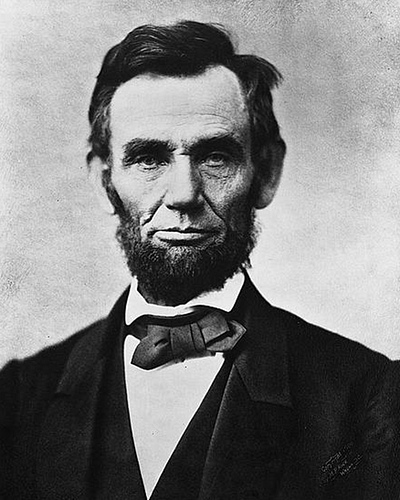
Image Courtesy of the US Department of Agriculture
“Give me six hours to chop down a tree and I will spend the first four sharpening the axe.” -Abraham Lincoln
Marketers, listen to the 16th President of the United States of America.
We all want our marketing and content marketing campaigns – the nurture tracks, events, product releases, eBooks, social outreach, webinars, etc. – to be razor-sharp. We want the execution to be flawless, the content to be entertaining and intelligent, the leads generated to be our target personas in living and breathing form.
But without proper planning, reaching these goals is as easy as chopping down a tree with a blunt axe. It requires a lot more work, a lot more manpower, and there’s a good chance you won’t succeed.
As Uncle Abe understood, proper planning is the most important thing you can do to ensure success. And for marketing campaigns, there’s a lot that goes into this planning process. You need to understand the goals of the campaign and how they support the goals of your organization, which personas you’re targeting and the topics these buyers care about most, who on your team is responsible for managing and executing each piece, how to organize and communicate dates and timelines on a shared calendar, and how to get the maximum results from your content with minimum effort.
Sounds like a lot, and it is. So to better understand how to properly plan a modern marketing campaign, we caught up with Caroline Lalla, Web Marketing Manager at Lenovo, the largest PC maker in the world and an emerging PC Plus leader.
Below, Lalla shares 7 tips for mapping out a successful marketing campaign:
1. Organize a Campaign Strategy Team
This team is responsible for planning the demand generation marketing campaigns for the year. Our strategy team is focused on three segments and is comprised of the following: segment campaign managers, content manager, marketing operations manager, agency partners and relevant stakeholders.
2. Ensure Corporate Priorities Drive Your Campaigns
It is imperative to understand the larger corporate priorities and ensure your campaigns support those initiatives. These priorities can potentially become your overarching campaigns. It is important to always have this tie-in to show the maximum value and ROI for your marketing efforts.
3. Create a Calendar
Once we have identified our key priorities for the year, we start to build out a master calendar, organized by quarter. We add in our corporate priorities, halo product launches, key segment industry events and segment buying seasons. This helps to identify overlaps and ensures all of the key initiatives for the year have been captured. We can then decide on the key campaigns and their high-level dates.
Our campaigns often run over several quarters, but we have found it best to plan our content strategy for those campaigns one quarter at a time. This enables us to make optimizations for future quarters of the campaign, based on the content performance data for that quarter.
4. Identify Your Buyer Personas and Their Pain Points
For each segment, we go through a detailed process to identify the target personas, their pain points, and the solutions we offer to address those pain points. This process should not be rushed because it creates the foundation the messaging for your content, and ultimately, the success of your campaign.
If you have not already locked down the stages of the buying cycle, you should do that at this time. This is crucial for the next phase of planning.
5. Identify Content Topics and Align to the Customer Buying Cycle
We have found the content ideation process is best handled in a brainstorming session. It is important to invite subject matter experts (SMEs) to this meeting, as they can offer valuable insights that might not be known to the marketing team.
Once the topics have been identified, we select the formats that would best visualize the content. We consider how many ways the content can be re-purposed to ensure we get the most value as possible out of one piece of content.
We also have a sound understanding of the content types that resonate with our personas in the various stages of the buying cycle. For example, we know that infographics work well at the beginning of the buying cycle, while case studies are better in later stages.
6.Organize Content into an Editorial Calendar
Once the content plan has been finalized, we add the content into a schedule for creation. We have found this is best done by using a tool that enables easy management of workflow and content publishing.
7.Optimize
We are always optimizing our content and campaigns based on performance. The content marketing team should definitely be tied out with the data analytics team so that the strategies can be continually refined. The content evolution process is never done!
So now you know how Lenovo “sharpens the axe,” so to speak, on their marketing campaigns. For more, you can also download the eBook on this topic, featuring insights from Lalla and other top marketers. It’s called the Blueprint of a Modern Marketing Campaign, and focuses on planning and organizing for marketing success.
Ready to get started? First, write out Abe’s advice and tape it somewhere that you and your team can see it. Next? Get sharpening.

